Abandoned History: The Life and Times of Edsel, a Ford Alternative by Ford (Part III)

Ford conducted a lot of marketing research for its Edsel brand and was assured by many well-educated MBA types that its new lineup would be hugely successful. The research scientists said the unique styling and features Edsel offered would appeal to a broad cross-section of the American populace. After a television musical debut in the fall of 1957, Edsels were shipped to dealers where they remained under wraps until it was time for the ‘58 model year.
Crazy styling aside, Edsel’s arrival caused some immediate brand confusion in relation to Mercury, and in more limited circumstances, Ford. Much of said confusion occurred in the company’s debut year when Edsel spread the “lots of new models” sauce a little too thin. We start at the brand’s second most basic offering: Pacer.
As mentioned in our last entry, we’ll proceed onward with the Edsel models that lived a single model year. A total of four sedans and three station wagons that were “all-new” filled out the lineup, and the Pacer was a step up from Edsel’s entry-level sedan, the Ranger. In fact, the Ranger and Pacer had much in common and shared the smallest full-size platform Edsel used.
While the majority of Edsel cars were more closely related to Mercury, the Pacer was an exception: Its heritage traced back to the Ford Fairlane. The Fairlane name was a recent addition to Ford’s lineup and joined in 1955 as the full-size replacement for the discontinued Crestline. In Ford’s hierarchy, the Fairlane was its most expensive full-size sedan. Underneath it was the entry-level Mainline and middling Customline.
Fairlane entered its second generation in 1957 and grew larger in every direction as chrome and the tailfin invaded the American automotive landscape. A new top trim arrived, the 500, which was quite expensive for a Ford. The Fairlane was available in several different body styles and included a sedan delivery and retractable hardtop convertible.
Due to the unique way Edsel was organized (and Ford’s desire for a “full” lineup), the Pacer’s body style offerings were more constrained. It was available with two doors as a hardtop coupe or convertible, and with four doors as a pillarless hardtop and standard sedan. And though it shared the same platform as the Fairlane, the Edsel was larger because of its styling.
The two cars shared a 118-inch wheelbase, but all other dimensions were different. The overall length on the Fairlane was 207 inches, whereas the Pacer was 213”. Width of the Pacer was 79.8”, while the Fairlane was narrower at 78 inches. The Edsel was notably lower than the upright Fairlane: Pacer was 56.8 inches high, while the Ford was 58.9 inches.
As Pacer was a step up over the base Ranger, it used only the Ranger’s largest engine. It was a 361 cubic inch (5.9 liter) V8 from Ford’s FE series. FE was a new engine offered for 1958 and was intended to replace the Y-series V8. The 361 was not shared with the Fairlane, since it debuted with its own full engine lineup before the FE was ready. Pacer had a four-barrel carburetor as standard, which meant 303 horsepower and a generous 400 lb-ft of torque.
There were two transmissions on offer for Pacer, Ford’s three-speed manual, or the three-speed Cruise-O-Matic automatic. Said automatic was shifted at the column in its basic upgrade form, or for an additional $231 ($2,393 adj.) investment, the Teletouch system was available.
Ford’s Fairlane received a visual refresh for its second model year, most notable via the arrival of a more streamlined front end that featured quad headlamps. The Pacer had quad headlamps too, but that’s the end of major visual similarities between the two cars. The most controversial visual choice on all Edsels was the grille, so let’s start there.
Instead of a normal horizontal grille design like the rest of Ford’s brands, the Edsel had a large central cut-out that was roughly oval-shaped. It was quickly termed the “horse collar” for its equestrian equipment vibes. The gaping hole in the center of the Edsel was decorated with a chrome trim insert that was roughly the same shape, along with vertical EDSEL block lettering in the middle.
Above the prominent two-phase grille was the new Edsel “E” hood ornament. It resided at the peak of the hood, which had a power bulge formed around the top section of the grille. At either side of the hood bulge was a straight shut line that ended at the quad headlamps. Circular sealed beam units were encased in chrome and housed in ovals that protruded from the fender to end abruptly and vertically. Maserati would use some of the Edsel’s front-end look for its 1963 Quattroporte.
Edsel’s designers didn’t stop at one big grille though and added two more to the Pacer. Thin chromed slats were horizontal and elongated and wrapped around the corner of the fender. Turn indicators were integrated into these secondary grilles. Once past the front clip, the Pacer’s design settled down a bit and carried much of the profile of its Fairlane sibling.
The windshield, doors, door handles, and roof design of the Fairlane were carried over to the Pacer. Differences included the use of trim: Where the Fairlane had a continuous chrome spear from front to rear, the Edsel’s tapered off at the front door. More detailing arrived aft of the B-pillar, in the form of a chromed trim protrusion that recessed into a scallop. The scallop was presented in a contrasting color to the body.
The scooped design formed the basis of the Pacer’s rear, which did not have the in-style and highly demanded tail fins. Though the 1958 Fairlane’s rear could hardly be called beautiful, it had the expected fins, large rear lamps, and lots of chrome. By contrast, the only styling note the Pacer hit was the chrome.
The scallop at the middle of the Pacer grew wider until it reached the back of the car, like a big pair of chrome tongs. Within the shape was EDSEL in block letters. At the back, the brake lamps formed a sort of tail fin that was turned on its side. The lenses were a rocket-inspired shape and curved downward toward the license plate. The trunk lid was sculpted heavily to form the edges of the lamps.
The tail lights stuck out further than the rest of the rear clip, as the scallop theme continued: There was a concave shape between rear lamps and bumper. There was no place to integrate a reverse lamp within the unique tails, so rectangular clear lenses appeared just above the bumper. Less ham-fisted than the Fairlane’s bumper, the Pacer’s sculpted chrome had concave indentations and looked better fitted with the rest of the design.
Inside, the Pacer carried the same Edsel interior theme as the rest of the range, with slightly nicer amenities compared to the base Ranger. The back of the seats were contoured (instead of flat), and cloth upholstery was an upgrade over the Ranger. Various places in the interior featured more brightwork, which was stainless steel. Shiny bits carried over on the exterior but were not present on Ranger.
Options included a heater at $92 ($953 adj.), air conditioning for $417 ($4,320 adj.), and a radio that asked $95 ($984 adj.). All in, the various versions of Pacer were priced from $2,700 to $2,993 ($27,973 to $31,009 adj.). And though the Pacer was a descendant of the lesser Fairlane, it was priced against the more prestigious Mercury Monterey.
Monterey rode on a longer wheelbase and was available with larger engines and better styling. The price difference between the two was no more than a few hundred dollars, even adjusted for inflation.
With its awkward pricing, styling, and the general confusion Edsel caused in its first year, the Pacer was not successful. Of the 63,110 cars Edsel sold in 1958, 19,057 were Pacers.
The most popular Pacer was the hardtop coupe (6,139 sales), followed by the standard sedan at 6,083 examples. The hardtop sedan sold 4,959 copies. All three models were much more popular than the convertible, which sold only 1,876 examples in its first and only year.
The Pacer was canceled after 1958 as Edsel consolidated its product line. But given its more affordable pricing, the Pacer was an absolute sales star compared to the next model we’ll cover: the Citation. See you then.
[Images: Ford, YouTube]
Become a TTAC insider. Get the latest news, features, TTAC takes, and everything else that gets to the truth about cars first by subscribing to our newsletter.

Interested in lots of cars and their various historical contexts. Started writing articles for TTAC in late 2016, when my first posts were QOTDs. From there I started a few new series like Rare Rides, Buy/Drive/Burn, Abandoned History, and most recently Rare Rides Icons. Operating from a home base in Cincinnati, Ohio, a relative auto journalist dead zone. Many of my articles are prompted by something I'll see on social media that sparks my interest and causes me to research. Finding articles and information from the early days of the internet and beyond that covers the little details lost to time: trim packages, color and wheel choices, interior fabrics. Beyond those, I'm fascinated by automotive industry experiments, both failures and successes. Lately I've taken an interest in AI, and generating "what if" type images for car models long dead. Reincarnating a modern Toyota Paseo, Lincoln Mark IX, or Isuzu Trooper through a text prompt is fun. Fun to post them on Twitter too, and watch people overreact. To that end, the social media I use most is Twitter, @CoreyLewis86. I also contribute pieces for Forbes Wheels and Forbes Home.
More by Corey Lewis
Latest Car Reviews
Read moreLatest Product Reviews
Read moreRecent Comments
- Bd2 If I were going to spend $ on a ticking time bomb, it wouldn't be for an LR4 (the least interesting of Land Rovers).
- Spectator Wild to me the US sent like $100B overseas for other peoples wars while we clammer over .1% of that money being used to promote EVs in our country.
- Spectator got a pic of that 27 inch screen? That sounds massive!
- MaintenanceCosts "And with ANY car, always budget for maintenance."The question is whether you have to budget a thousand bucks (or euro) a year, or a quarter of your income.
- FreedMike The NASCAR race was a dandy. That finish…
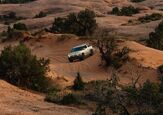
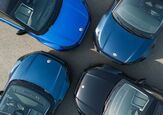


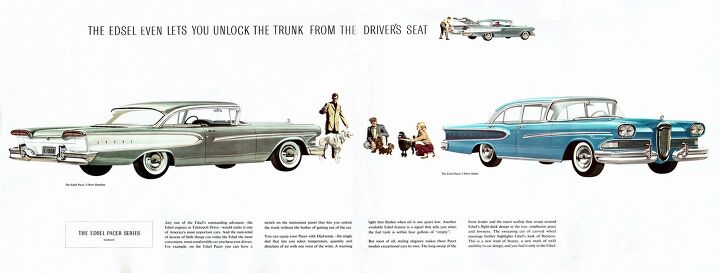















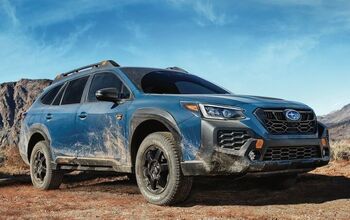
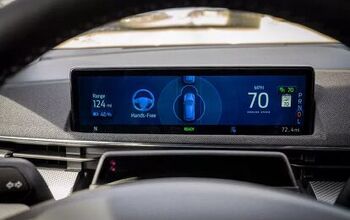
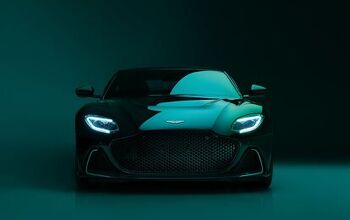
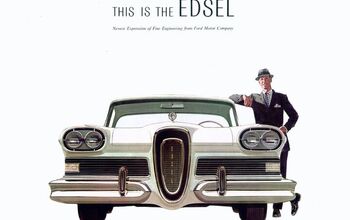
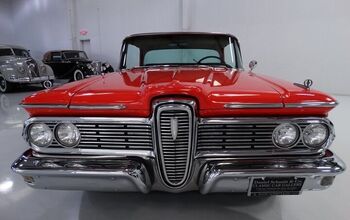
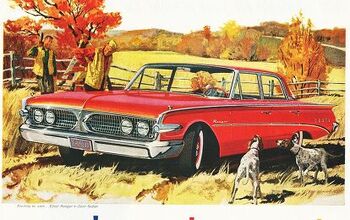
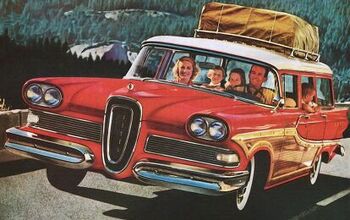
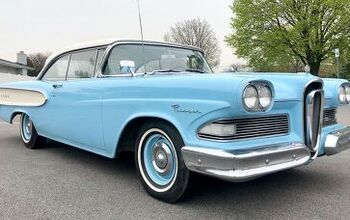
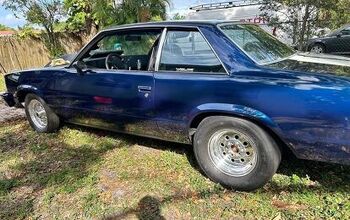
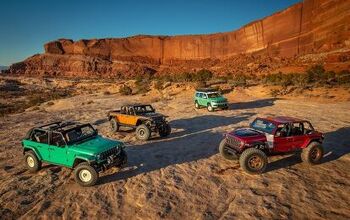
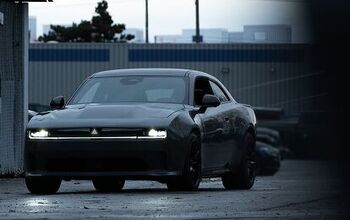





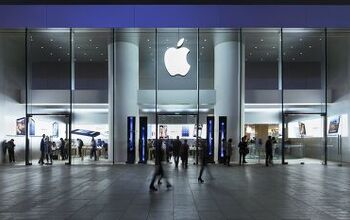
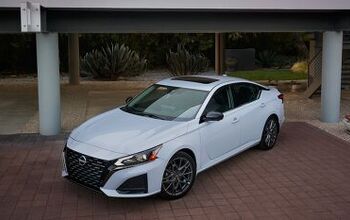
Comments
Join the conversation
Or the Monarch line? I cannot find an 'edit' option with this new format.
So we all agree the Edsel was I'll timed for several reasons, with the economy being a major factor. Another major factor was the American car buying public was going through a change at the time that nobody knew what the outcome would be. We were getting tired of the "50s excess" there were already a multitude of brand options although they didn't vary from one another all that much. And the idea of smaller cars was just starting to gain traction. Admittedly the mits of all the excess, the Edsel seemed pretty radical with its approach, and let's face it, the name "Edsel" is just a little odd, as a man's name as well as a cars. All things being said, perhaps a different time and place could have had a much more favorable response. I liked the rear styling, the instrumentation and it's features, and with a little toning down the front could have even worked. Chrysler lost the Desoto, and there was a time when they were very popular so the Edsel didn't have a chance. I would submit, the name was more of a problem than given credit for it's failure. Up against a beautiful name like " Fairlane", or Galaxie, or even "Chrysler" and all the nice names at GM, Edsel just didn't flow.